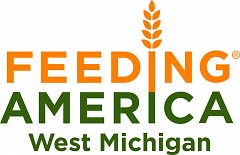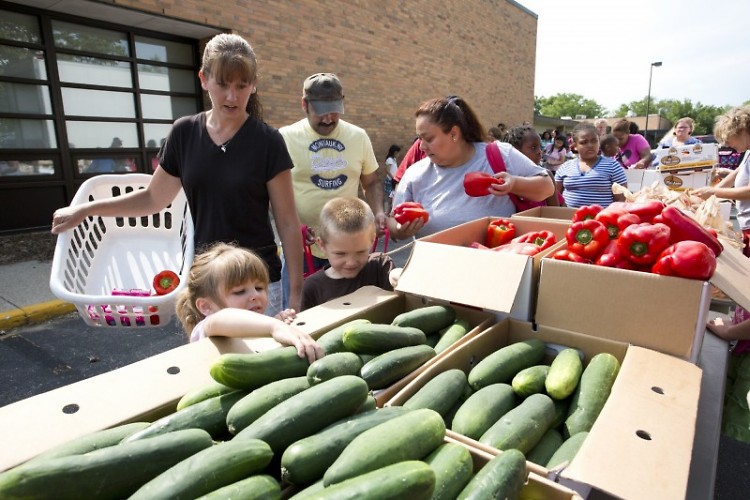When a needy family with a sick child came to United Church Outreach Ministry (UCOM), program director Shawn Keener knew providing food would be the first step toward helping them.
“Food is usually the presenting issue that brings people in,” she explains. “But it’s by no means the only issue that families are facing.”
The family’s apartment, she soon learned, was riddled with mold. UCOM began to seek new housing for them, but soon into the search, their child died. As the family grieved, UCOM was able to offer support and counseling while meeting their basic needs.
Because UCOM, a small nonprofit with a limited budget, gets much of its food from Feeding America West Michigan (FAWM), they are able to help families like this one- not only by feeding them, but by supporting them in other ways.
Feeding America West Michigan has served those in need since 1981, striving to provide safe food for the hungry in the community. But many people who want to help the hungry are unaware how much nonprofits such as UCOM need FAWM.
“Feeding America is critical to us accomplishing our mission,” says Keener. “Probably 40 percent of our food at least comes from Feeding America.”
While FAWM is not a food pantry itself, it acts as a middleman between surplus food suppliers and hundreds of local pantries. Many pantries are too small to store as much food as a supplier would offer them; because of this, they would instead need to use expensive options such as Sam’s Club or Meijer. Money donated to FAWM purchases a larger quantity of food than it would at the store, allowing area food pantries to receive the cheapest options possible.
“If they didn’t exist, our food donations would be way down," Keener explains. "We can’t individually contact companies and say, ‘Can you bring us a semi of products?’ so the variety on the shelves would be much less.”
Having Feeding America around, according to Keener, allows pantries to live in harmony with each other.
“I think there would be much more competition among the pantries if we were all trying to contact these entities and get food for ourselves,” she says. “We wouldn’t have the warehousing capacity to do that, so I think it would very negatively affect our food supply.”
Beulah Guydon of Positive Options Inc., a nonprofit that provides attitude training and after-school programs for children, says that FAWM “helps us reach children in need by being economical,” she says, “being accessible to us and being available to us.”
“Without Feeding America, it would definitely, definitely be harder,” she says. “I would like people to know that it’s a wonderful program …. It’s a needed program, that if people support it financially … they are definitely reaching the population in need.”
“We wouldn’t be able to stay under budget on our food costs if we didn’t have Feeding America,” says Jeff Hoyh, programs manager of God’s Kitchen, an agency of Catholic Charities West Michigan that provides lunches to the needy of the Heartside neighborhood, many of whom are homeless.
Of the 300 people God’s Kitchen serves each day, Hoyh says “a lot of them are mentally or physically disabled so they can’t make food for themselves.”
“Agencies like ours, Mel Trotter, Dégagé—people who house and feed—we wouldn’t be able to survive without them,” he says. “When we can buy food for six to 12 cents per pound, compared to when you’re going to the grocery store and buying it for five to seven dollars per pound, they’re a tremendous help all around.”
Executive Director of North Kent Community Services Claire Guisfredi says her agency uses FAWM during the summer to provide lunch bags for hungry children.
“When resources are scarce,” she says, families “come here up to three times during the summer for food.”
“I talked to a mom who was really grateful for the food bags because, she said, ‘my kids aren’t eating at the schools in the summer.’ She had three children and they go through a lot more food and it’s really tough when she only has a certain amount of money,” says Guisfredi. “We’re really glad [FAWM is] around."
The Rapidian, a program of the 501(c)3 nonprofit Community Media Center, relies on the community’s support to help cover the cost of training reporters and publishing content.
We need your help.
If each of our readers and content creators who values this community platform help support its creation and maintenance, The Rapidian can continue to educate and facilitate a conversation around issues for years to come.
Please support The Rapidian and make a contribution today.


